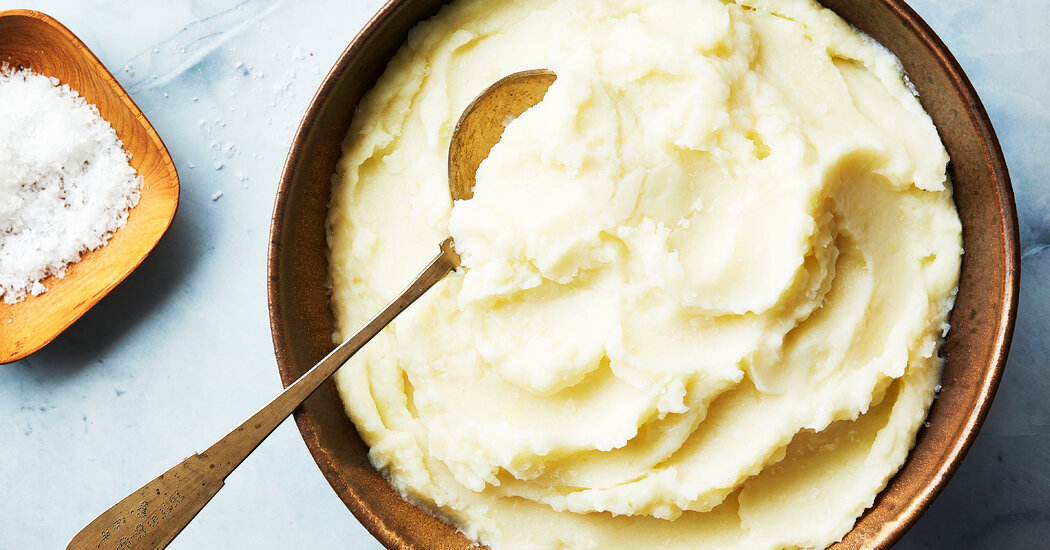
In his poem “Digging,” the Irish poet Seamus Heaney describes the sensation of holding potatoes as “loving their cool hardness in our hands.” That “cool hardness” is the start to a proper mash, which should end with potatoes that taste deeply of themselves but avoid becoming pasty.
To preserve those tastes, I decided to try steaming potatoes first instead of boiling them and was so happy with the results. Letting potatoes tenderize in a pot of rapidly bubbling water works, of course, but tends to leave them waterlogged, diluting their natural flavor and causing the edges to slough off like a landslide. Keeping the peels on helps, but cooking spuds whole often results in a too-soft shell around a too-firm center.
Steamed potatoes end up just right. As I learned through my family’s Chinese cooking, steaming intensifies a vegetable’s truest flavor. Applied to potatoes, the process also allows them to soften while absorbing the right amount of moisture and, because they’re not salted, heightens their inherent sweetness.
I got the best results with Russet Burbank potatoes, also known as baking potatoes. This is because they have large starch granules that swell then separate during cooking, which means they can be easily smashed to bits and readily absorb butter and milk. The cells of white, gold and red potatoes — waxy and lower in starch — swell less and stick together, making them hard to crush (not ideal for mashing, but nice for potato salads and gratins).
Once the russets are steamed, they should not be overworked so they stay fluffy. A ricer is perfect for breaking down potatoes, but steamed russets fall apart just as easily under a dinner fork, which is finer than a potato masher and more common in any kitchen. Just be sure to avoid using a food processor or blender: Shearing potato starches with a blade causes them to go straight to gluey.
So does excessively beating crumbled spuds to incorporate other ingredients. Smoothing just-mashed potatoes with a splash of milk before folding in cold salted butter — ideal for creaminess — helps the golden pats fade quickly into the blend. The rest of the milk then gets whipped into the mix to help aerate it. The fork shouldn’t violently and erratically slice through the mash, but instead circle like a Ferris wheel, steady and gentle, up and down and back around.
Seasoning at the very end gives you a chance to taste how savory the mash is already from the salted butter, and then you can sprinkle on just what you need. This end-stage seasoning runs counter to the heavy-and-constant-salting camp of potato cooks, but actually intensifies the potatoes’ distinct deep earthiness. So does white pepper, which also keeps the creamy mound speck-free.
Perhaps the greatest secret to fluffy, not pasty, mashed potatoes is that they’re even better when made a day or two ahead. In “CookWise,” Shirley O. Corriher explains how cooked potato starches “retrograde” when chilled, ensuring that they don’t become gooey when reheated. It takes a little attention to detail and a lot of science to arrive at great mashed potatoes, but nothing’s easier than pulling the cool hardness of a container of mashed potatoes out of the refrigerator to heat up on a busy holiday.




